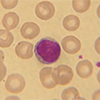
- Home
- Clinical Chemistry Tests
- Phosphate (Urine)
Phosphate (Urine)
Sample Preparation
Turnaround Time
1 daySample Processing In Laboratory
UsualSample Stability
UsualGeneral Information
Urinary phosphate analysis is useful in the differential diagnosis of hypo and hyperphosphataemia.
Hypophosphataemia with a low urinary excretion (i.e. <3 mmol="" 24h="" of="" phosphate="" is="" most="" likely="" due="" to="" decreased="" intake="" increased="" cell="" uptake="" or="" loss="" from="" the="" gut="" a="" high="" urinary="" excretion="" i="" e="">3 mmol/24hr> is associated with renal loss and together with a high plasma calcium concentration can be attributed to primary hyperparathyroidism or malignancy. A high urinary excretion with a normal or low plasma calcium implies secondary hyperparathyroidism, vitamin D deficiency, Fanconi syndrome, hypomagnesaemia, diuretic therapy or oncogenic osteomalacia.
Hyperphosphataemia with a urinary excretion of <50 mmol="" 24h="" is="" suggestive="" of="" hypoparathyroidism="" whereas="" a="" level="">50 mmol/24h suggests increased intake, cell destruction or bone malignancy. Other causes of hyperphosphataemia (e.g. renal failure, vitamin D toxicity, DKA & lactic acidosis) may be exluded using plasma creatinine or calcium measurements.
Patient Preparation
None
Reference Range
15-50 mmol/24hr
Source of Reference Range
Pathology Harmony recommendationsSpecifications
- EQA Status: NEQAS
- EQAS Scheme: Yes
Related Tests
Calcium (adjusted) Creatinine Parathyroid Hormone (PTH) Phosphate (serum) Vitamin D (25-OH VitD)Creation Date
Monday, 08 August 2011Modification Date
Thursday, 29 December 2022General Information
Location of Laboratories
Copyright UHB Pathology 2018
Protection of Personal Information – Clinical Laboratory Services comply with the Trust Data Protection Policy and have procedures in place to allow the Directorate and it’s employees to comply with the Data Protection Act 1998 and associated best practice and guidance.
University Hospitals Birmingham medical laboratories at Queen Elizabeth Hospital, Heartlands Hospital, Good Hope Hospital and Solihull Hospital are UKAS (United Kingdom Accreditation Service) accredited to the ISO 15189:2012 standard. For a list of accredited tests and other information please visit the UKAS website using the following link: https://www.ukas.com/find-an-organisation/
- Molecular Pathology is a UKAS accredited medical laboratory No. 8759
- Biochemistry is a UKAS accredited medical laboratory No. 8910
- Haematology and Transfusion is a UKAS accredited medical laboratory No. 8784
- Clinical Microbiology is a UKAS accredited medical laboratory No. 8760
- Cellular Pathology is a UKAS accredited medical laboratory No. 10141
- Musculoskeletal laboratory is a UKAS accredited medical laboratory No. 9897
- Heartlands, Good Hope and Solihull Hospital pathology laboratories are a UKAS accredited medical laboratory No.8217.
Tests not appearing on the UKAS Schedule of Accreditation currently remain outside of our scope of accreditation. However, these tests have been validated to the same high standard as accredited tests and are performed by the same trained and competent staff.
For further test information, please visit the test database: http://qehbpathology.uk/test-database
For further information contact Louise Fallon, Quality Manager, 0121 371 5962
 Biochemistry
Biochemistry Haematology and Transfusion
Haematology and Transfusion Clinical Microbiology (Including Virology)
Clinical Microbiology (Including Virology) Cellular Pathology
Cellular Pathology General Information
General Information Molecular Pathology
Molecular Pathology